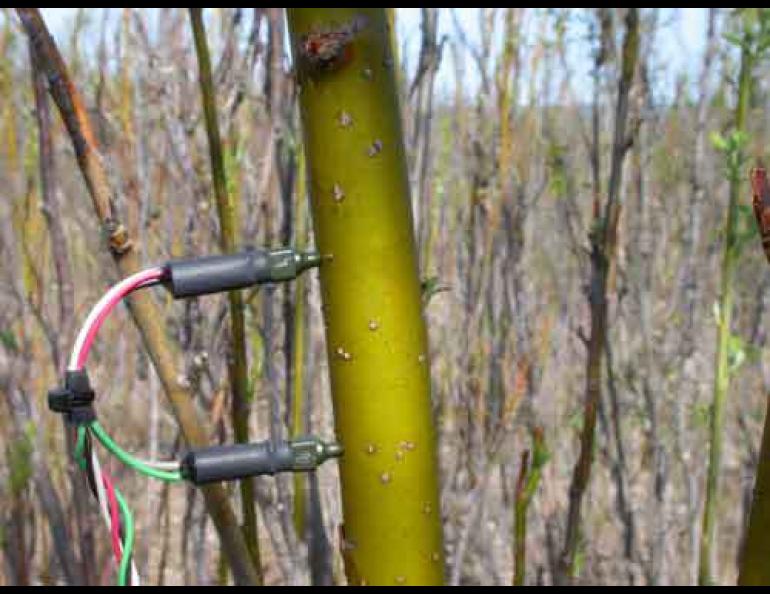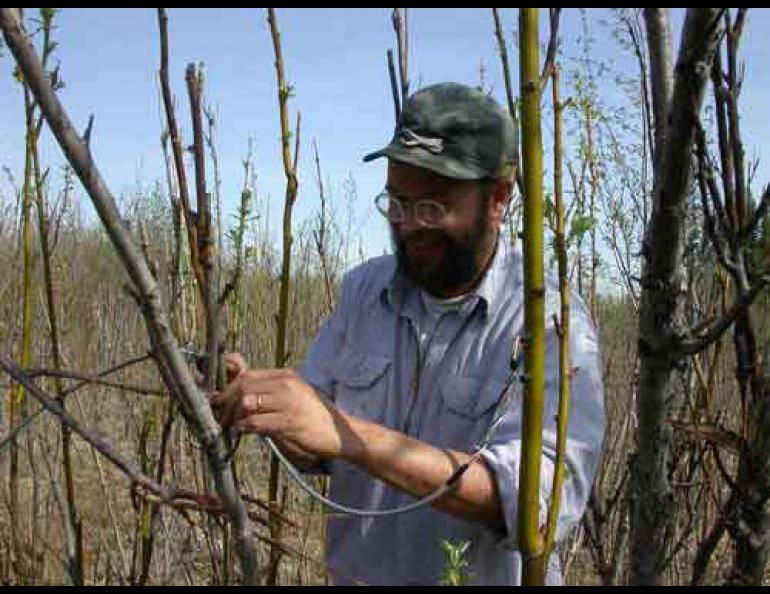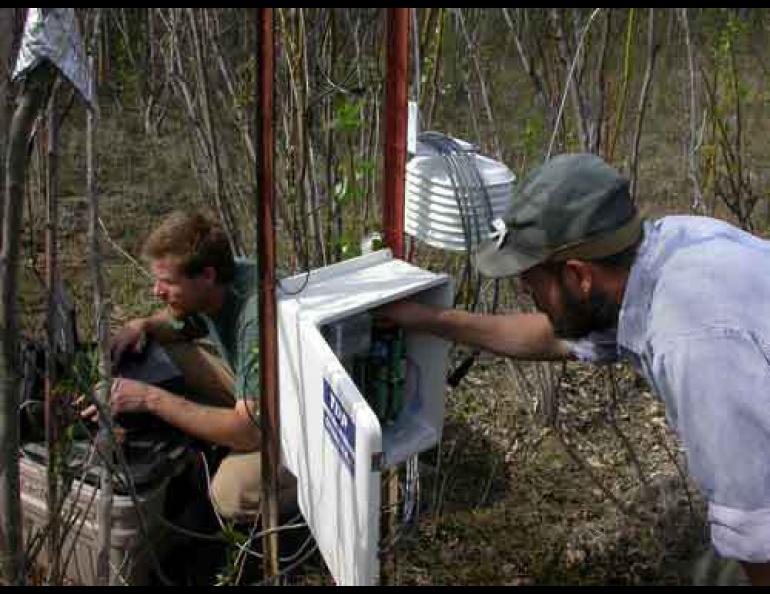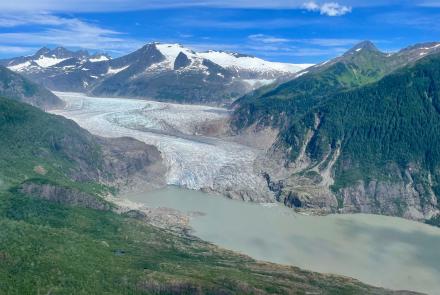


Spruce stay up late, wake early
The Tanana River looks like a sheet of molten brown glass as Knut Kielland pilots an 18-foot flatboat downstream for his first trip of the season. On this day in May, the Interior Alaska air has the pleasant temperature of San Diego, while the sticky leaves of balsam poplar perfume it as they burst from their tight winter buds.
As balsam poplar leaves and others begin pumping water from the soil through trees and then into the air, Kielland is trying to learn more about the process. An ecologist and research associate professor at the University of Alaska Fairbanks’ Institute of Arctic Biology, Kielland travels here in winter and summer with research assistant and right-hand man Karl Olson.
“Now these pumpkins are just popping,” Kielland says as he bends the stem of a willow to display tiny leaves uncurling. A native of Norway, Kielland uses “pumpkin” to describe many living things, including two dogs that approached him at the boat launch.
Holding a metal jig with one hand, Kielland uses a Makita drill with the other to make two pinholes in the trunk of a feltleaf willow as skinny as his thumb. Into those holes, Olson inserts needles attached to wires that run back to a control box. Those needles, pushed into the sapwood a few inches apart, will allow the measurement of voltage differences between them. From the readings Kielland can estimate how much water flows through the willow as it transpires. Larger trees can transport more than 100 gallons of water from the soil to the air each day. Kielland is interested in these floodplain willows--growing from floury silt just a few feet higher than the Tanana River--because he wants to learn how important river water is to trees and compare it to the importance of rainwater for trees in the uplands.
The new needled instruments have already allowed Kielland to measure something else. He's found that white spruce trees don't shut down just because winter hits. The trees start to move water within their trunks when snow, a foot deep, still covers the ground in spring. He tapped several white spruce on the Tanana last fall and found their sap was flowing in October, one month after deciduous trees had dropped their leaves and shut down. Tapping another spruce in the woods near his home in Fairbanks this spring, he found that the spruce was moving water in early April, again, a time when researchers had thought Alaska trees should be dormant.
“That’s very interesting,” said University of Alaska Fairbanks professor of forest sciences Glenn Juday when he learned of Kielland’s experiment with white spruce. “In a way it doesn’t surprise me, because of the negative effect of warm Aprils on the growth of white spruce. They crank up and start to photosynthesize when the ground water’s frozen. They need to move water then, and they can’t.”
Back on the Tanana River, Kielland and Olson tapped four live feltleaf willows with the needle thermocouples and one leafless tree with a broken top to use as a control. All summer, the instruments will record the trees’ efficiency as water pumps, until the leaves turn yellow in September and then fall to the sand. This will mark the end of the growing season for the willows, but not for the spruce a few hundred yards behind them.
“They’re probably not going to shut down (until later in fall), Kielland said. “They’re going to keep cooking.”





